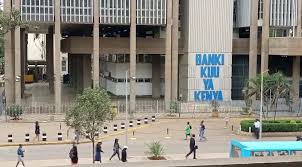The Central Bank of Kenya (CBK) has unveiled new guidelines aimed at helping commercial banks set interest rates more transparently and fairly for retail borrowers. The new framework, known as the Risk-Based Credit Pricing Model (RBCPM), will come into effect on 1st September 2025.
As part of the implementation, banks will have a six-month window to adjust the interest rates currently applied to existing loans. The model is expected to bring much-needed relief to borrowers, many of whom have seen slow reductions in lending rates, despite repeated signals from the CBK to lower the cost of credit.
In a statement, the CBK noted that the RBCPM is the result of an extensive public consultation process that began on 23rd April 2025. Feedback was gathered from a broad range of stakeholders, including commercial banks, non-bank financial institutions, development partners, industry associations, consultancy firms, academia, corporates, and individuals.
The new model is designed to improve the effectiveness of the Central Bank Rate (CBR) in influencing lending rates, by linking the pricing of loans more closely to market indicators. Specifically, it introduces a new reference rate: the Kenya Shilling Overnight Interbank Average (KESONIA), which will apply to all variable-rate loans, excluding those denominated in foreign currencies and fixed-rate products. Where KESONIA is not applicable, the CBR will be used instead.
Under the new rules, banks will be required to publicly disclose their loan pricing details — including the weighted average lending rate, the average risk premium (K), and any associated fees — on both their own websites and the CBK’s Total Cost of Credit (TCC) portal.
In addition, banks must update their internal systems, pricing models, documentation, and legal agreements to align with the RBCPM requirements.
The CBK will publish the KESONIA rate daily on its website and include it in its market data feeds and reports. This daily reference rate will provide a dynamic and transparent basis for calculating interest on variable loans.
A research note from Standard Investment Bank (SIB) welcomed the revised framework, stating:
“We expect the new model will significantly improve pricing transparency and ensure that lending rates remain aligned with the monetary policy corridor set by the CBR. This should lead to more consistent market behavior and faster policy transmission.”
SIB also highlighted the benefits of KESONIA being compounded in arrears, meaning interest is calculated at the end of each period based on daily rates rather than fixed at the outset. This approach enhances predictability and fairness for borrowers, offering a more accurate reflection of prevailing market conditions.















